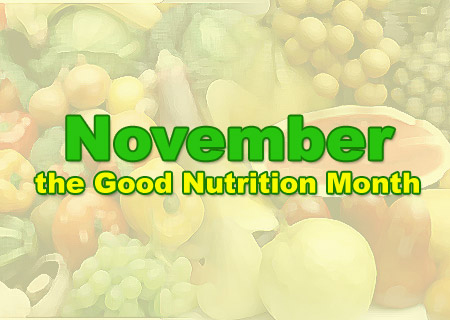November was celebrated as the National Good Nutrition Month and designated so to promote healthier eating habits, thereby healthier lives. It was a great idea to utilize this month in involving the entire family to chuck any bad eating habits and pick up newer, nutritious ones. Though we’ve moved past that month, there’s no harm in carrying good habits beyond it. Broadly speaking, we can stick to the age-old Food pyramid which was taught to us in school, which outlined what and how much our daily diet should contain.
To revise, at the base of the pyramid are the carbohydrates which according to WHO should form 65 percent of our daily food intake. Above that come fats, this must constitute 15-20 percent of our foodstuffs. Then further up come proteins which must contribute 10-15 percent of our meals. To top it all, the peak depicts the foods we must consume the least, being sugars and oils.
The WHO outlines the following as stepping stones on the path of good health. Also called as the Prudent Diet by WHO, the additional points included are –
Another important aspect in nutrition which is easily forgotten includes the need of vitamins and minerals. These although required in very small quantities, when deficient can wreak havoc in our bodies. Vitamin D which is produced by our body in the presence of sunlight is becoming rarer in everybody, especially those residing in towns, due to air-conditioned life-styles and all possible effort to avoid the sun. Vitamin B12 which isn’t available in a strict vegan diet is commonly low in pure vegetarians. Calcium and iron are other rarifying minerals which are extremely essential and deficient in absence of a balanced diet. So, a pleasant way to make sure that you are eating everything you need to is by including all possible colors in a meal, such as greens, reds, oranges, whites, browns and last but not the least yellows.
Fruits and vegetables, needless to say, must be consumed in significant quantities as they are the ones which contain the essential vitamins and minerals, the proteins and carbs. Milk and dairy products should be taken in a diet to make it complete and balanced and prevent the calcium, phosphorus deficiencies. Non-vegetarian foods are a rich source of all kinds of proteins and other nutrients. Animal sources are said to be biologically complete and superior to vegetable proteins. Egg is known to be a ‘biologically complete’ protein.
A good way of monitoring growth in children is to plot their height and weight on a Growth Chart. This is a graphical record of the child’s growth and probably the most reliable method to do so. Based on studies conducted on various age groups and both sexes, these charts are prepared differently for different countries, keeping in mind the structure and stature of the race of the country. They are prepared by the National Health authorities and are standard over each country. These are extremely simple to chart on and available with every pediatrician. They empower parents to track their child’s progress by themselves and take action before children deteriorate too much due to any disease.
In adults, the BMI can be calculated easily to get an idea of whether one needs to start changing their eating and working habits. It is calculated by dividing the weight in kgs and the height in metres squared. The ideal BMI is between 18.5-25 kg/m2. Below the lower limit is considered thin while beyond 25 is said to be obese.
Once it has been established that getting on the weighing scales always has it tip on the wrong side, then its time for correction. The best and ideal way to lose those pounds is to sweat out the calories. Exercising is the only healthy way to lose extra weight and crash-dieting, no-fat or no-carb diets are all very unhealthy and catch you dealing with newer and graver health issues in the long run. A balanced, wholesome diet without starvation with adequate exercise is the mantra to fitness. While the scales might tip towards obesity they might also tip towards undernourishment. Malnutrition comes with its own set of health problems which are albeit easier to correct as most nutrients can be easily replaced. But to quote myself again, a complete meal everyday is the way to eat, so that you live to eat and not eat to live.
Lastly, health is more precious than people realize it to be. It makes more sense to add life to your years than years to your life and the way to do that is to eat healthy and live a happy and fulfilling life. Only a physically sound body can support a productive mind and promise a satisfied soul. So eat what makes you body happy and having not just a Good Nutrition Month but a Great Nutritional Life is of prime importance!
-Dr. Rachita Narsaria

